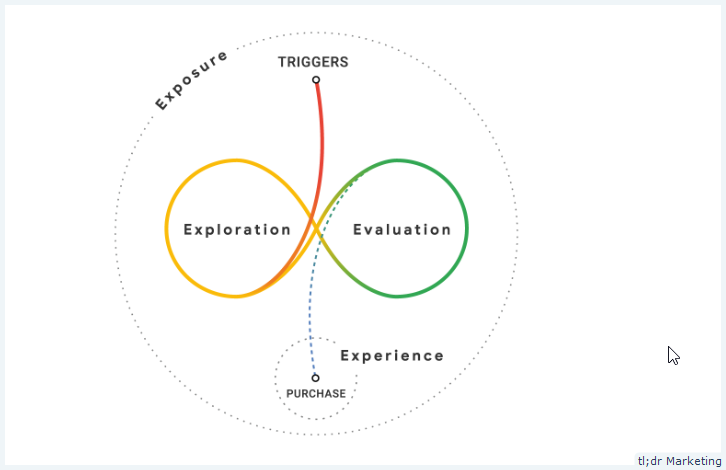Google’s Latest Research on the Buyer Decision Process Shows Decision-Making Happens in the Middle of the Purchase Journey
https://www.thinkwithgoogle.comThe way people make decisions is messy — and it’s only getting messier. Still, there are a few things we know about purchase behavior. We know that what happens between trigger and purchase decision-making is not linear. We know there is a complicated web of touchpoints that differs from person to person. What is less clear however, is how shoppers process all of the information and choice they discover along the way.
As the internet has grown, it has transformed from a tool for comparing prices to a tool for comparing, well, everything. That’s clear in how we’ve seen purchase behavior change over the years on Google Search.
People look for information about a category’s products and brands, and then weigh all the options. This equates to two different mental modes in the messy middle:
- exploration, an expansive activity, and
- evaluation, a reductive activity.
Whatever a person is doing, across a huge array of online sources, such as search engines, social media, aggregators, and review websites, can be classified into one of these two mental modes.
They also talk about Cognitive biases that influence purchase decision-making
- Category heuristics: Short descriptions of key product specifications can simplify purchase decisions.
- Power of now: The longer you have to wait for a product, the weaker the proposition becomes.
- Social proof: Recommendations and reviews from others can be very persuasive.
- Scarcity bias: As stock or availability of a product decreases, the more desirable it becomes.
- Authority bias: Being swayed by an expert or trusted source.
- Power of free: A free gift with a purchase, even if unrelated, can be a powerful motivator.
In the experiment, shoppers were asked to pick their first and second favorite brands within a category, and then a range of biases were applied to see if people would switch their preference from one brand to another. To test an extreme scenario, the experiments also included a fictional brand in each category, to which shoppers had zero prior exposure.
The results showed that even the least effective challenger, a fictional cereal brand, still managed to win 28% of shopper preference from the established favorite when it was “supercharged” with benefits, including five-star reviews and an offer of 20% extra for free. And in the most extreme case, a fictional car insurer won 87% share of consumer preference when supercharged with advantages across all six biases.


